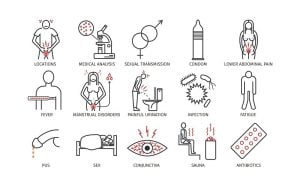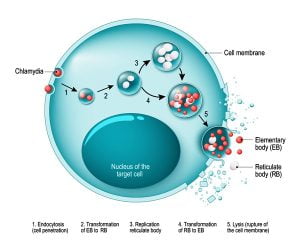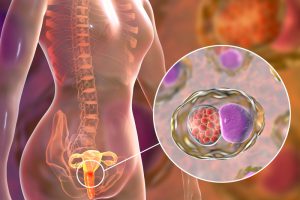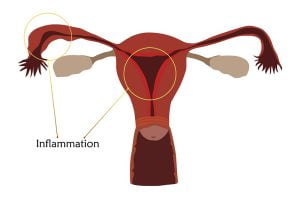Browsing: Chlamydia Graphics
Comprehensive Information, Resources, and Support on Chlamydia
Many people who have chlamydia don’t develop any symptoms, but they can still infect others through sexual contact. Common symptoms of chlamydia are genital pain, pain in the lower abdomen, painful periods, itching or burning in or around the vagina, painful sexual intercourse in women, pain and swelling around the testicles in men and discharge from the vagina or penis. Chlamydia trachomatis, in some cases, might also infect the rectum.
Chlamydia can be difficult to spot in men because the symptoms are rare and not consistent between men. In men, the chlamydia bacterium generally infects the penis (urethra), anus, or eye. Common symptoms of chlamydiosis infection in men are cloudy discharge from the tip of the penis, pain during urination, burning and itching around the opening of the penis, pain in and swollen testicles, etc. If male chlamydoisis is left untreated, it may cause internal scarring off genitals, decrease in sperm count with less fertile sperm, rheumatological conditions, conjunctivitis, urethritis, etc.
Chlamydiae are gram-negative and obligate intracellular pathogens. These bacteria either exist as infectious elementary body (EB) or the intracellular reticulate body (RB). They are capable to replicate and multiply. The life cycle of Chlamydiae is of 48-72 hours. The elementary body (EB) is a small infectious particle which attaches to and enters a cell to replicate. The EB transforms into a reticulate body (RB) in 7-8 hours and begins to multiply within an isolated area (called an inclusion). Some RBs reorganize back to EBs in 24 hours and, as the cell wall bursts, the EBs are released to infect adjacent cells or to be transmitted to and infect another person.
Chlamydia is a bacterium capable of causing infections in both men and women. Chlamydia bacterium is found in the cervix and urethra and can live in the throat or rectum. Common symptoms of female chlamydiosis are cervicitis (infection of the uterine cervix), damage to the fallopian tubes, infection of the urethra, pelvic inflammatory disease, pus-like yellow discharge from vagina, etc. Female chlamydiosis can be detected by cervix or vaginal swabs in research laboratories and through forensic investigations. Chlamydiosis can spread through sexual contact with an infected partner during unprotected sex, eye infection or conjunctivitis, from an infected mother to her baby, etc.
Chlamydia is one of the most common causes of pelvic inflammatory disease (PID). PID usually develops from 2 days to 3 weeks after exposure to the chalmydia bacteria, but it may take months also to develop. Early diagnosis and treatment can help prevent the development of irreversible and long-term complications such as PID. PID caused by chlamydia is usually silent and asymptomatic. If a woman is unaware of it, it can cause permanent damage to the reproductive organs leading to infertility. Even after treatment, there are strong chances that the infection might reoccur.
ADVERTISEMENT








